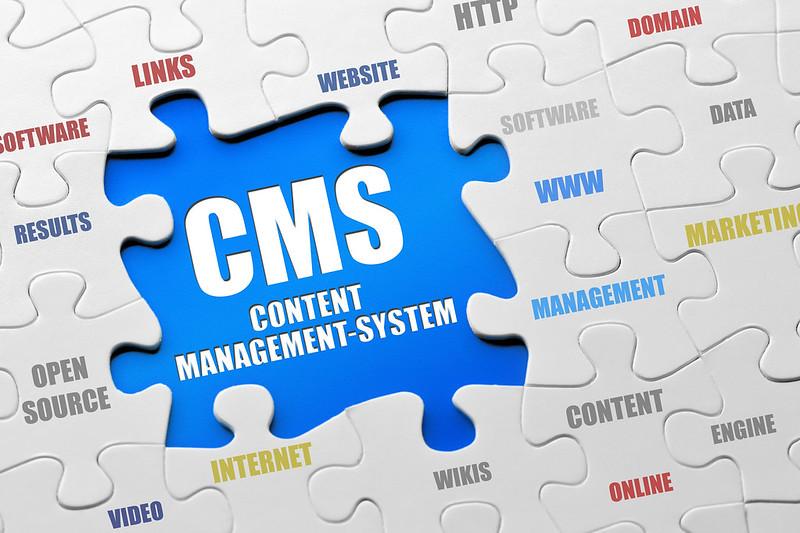If you are interested in technology and want to work in marketing, marketing technologist is an attractive position with many benefits in salary and job opportunities. So how to become a marketing technologist?
This article will give you a detailed seven-step guide to getting this job done. Also, I will mention the difficulties you need to overcome in this process.
Keep scrolling for more!
Overview
I will briefly explain this position’s role, tasks, and work environment so that you can get a better picture before you decide to pursue it.
Who Is A Marketing Technologist?
A marketing technologist is a pro who brings together marketing and technology. This person helps firms use technology for marketing plans by choosing tools to analyze data or manage customer relationships.
These technologists work with the marketing and tech team to ensure everything goes smoothly. They are vital to help firms make good choices using information and give customers a good experience.

Job Duties
As a marketing technologist, my daily duties depend on each project and the company’s requirements and can vary across sectors and industries. In general, here are the tasks I often do:
- Pick and set up tools like marketing software, automation tools, and CRM systems that help marketing work better together.
- Check data to see how customers act and if the marketing works well to decide what to do next.
- Work with the marketing team to ensure the online ads do well.
- Teach the marketing team how to use new tech tools and help them when needed.
- Track and measure the ROI.
- Make sure that tech complies with relevant data protection and privacy regulations.

Work Environments
Marketing technologists usually work in a workplace where everyone can share ideas and work well together.
They work with different teams like marketers, tech experts, and designers. They can work in marketing companies, tech firms, or big companies’ marketing departments.
Besides, their work environment focuses on learning and trying new things. Because technology changes fast, they are always learning. They need to know about the latest tools and trends.
How To Become A Marketing Technologist
Here is my 7-step guide to be a marketing technologist. I will share my valuable experiences in each step to help you get through quickly.
1. Gain A Bachelor’s Degree

A Bachelor’s degree helps you learn about marketing and technology in a structured way. So I recommend it as the first step you need to go through.
Degree programs often delve into specialized topics within marketing and technology. Thus, you will gain a deeper knowledge of digital marketing, data analytics, marketing automation, etc.
In this step, choosing the right major is crucial. While there isn’t a specific major for this position, there are several majors that can provide a solid foundation for this role:
- Marketing or Digital Marketing: You will learn marketing principles, consumer behavior, and ad strategies
- Information Technology or Computer Science: You’ll learn programming, data analysis, and how to work with various software and tools.
- Business Analytics or Data Science: These majors will teach you to analyze and interpret data to make informed business decisions.
When finding a program, make sure the college you pick is recognized for its education in marketing and tech. Also, ask if the college helps you find jobs or internships after you finish.
2. Experience With CMSs

The next step is learning about CMSs because these systems help manage online content like articles, images, and videos.
CMSs make it easy to put content online quickly and consistently. So, they help you save time and keep your message strong.
Besides, CMSs often integrate with other marketing tools. Some of them are analytics and email marketing platforms. Thus, learning how to connect and leverage these integrations can help you make data-driven decisions.
A good CMS often includes SEO features and analytics plugins. So you can optimize content for search engines and track its performance.
Here are some popular and widely used CMSs:
- WordPress: One of the most popular CMS platforms. It is suitable for various website types, from blogs to e-commerce stores.
- Joomla: A flexible CMS with a strong community and a good balance between user-friendliness and customization.
- Drupal: Known for its robustness and scalability, Drupal is suitable for more complex websites with advanced customization needs.
After learning the CMS basics, you should create your website or blog using the chosen CMS and try making content and changing how it looks. Don’t forget to learn how to use different designs that make websites look good.
3. Hone Skills

Besides the basics of the field, you need to develop essential skills related to it, including:
- Tech application: Learn to use marketing tools, automation software, and CMSs.
- Data analysis: Learn to interpret data and draw insights. You need to know how to make sense of numbers to help you optimize campaigns and make informed decisions.
- Content creation: Practicing writing, designing, and producing engaging content for different platforms, such as articles, pictures, and videos that people like.
- SEO: Learn about making content that shows up on Google to bring more people to websites.
- UX design: Gain insights into designing user-friendly websites and interfaces that are easy for people to use.
- Email marketing: Learn about sending emails people want to open and read, including crafting compelling emails, segmenting audiences, and analyzing results.
- A/B testing: Lean to compare strategies and optimize marketing efforts for better results and customer engagement.
- Data privacy and security: Understand how to keep customer data safe and follow rules about privacy.
Improving these skills helps you do different tasks well and makes you stand out from others when looking for a job.
4. Practice (Gain Experience)

Practice is vital because it helps you to apply your knowledge and skills to real-world projects, whether using marketing tools, analyzing data or integrating technology.
Real-world cases often throw unexpected challenges. Practicing equips you with problem-solving skills. As a result, you will be resourceful and adaptable.
To practice, you can work on your personal projects, internships, or freelancing. I prefer internships and freelancing options because you will meet real clients and projects to have practical insights and networking chances.
In this process, you must be proficient in marketing tools and software. When practicing analyzing data, I recommend using tools like Google Analytics to know user behavior and campaign results.
Regarding A/B testing, you can change small things in your campaigns and see which version performs best to work with it.
Keep going with other skills, and use this time to apply them to practical tasks to master them.
5. Build A Portfolio

Now you have a strong educational background, the required skills, and some experience, it’s time to create a portfolio! A great portfolio helps you look different from others applying for the same job in a busy job market.
If you have no experience creating a portfolio, follow this guide:
- First, pick a few projects that show different things you can do. Don’t worry about having too many.
- Then, focus on quality over quantity. It’s better to have a few outstanding projects than many average ones.
- Include different kinds of work like articles, pictures, videos, and presentations to show you can do various things.
- Tell what you did for each project, the tools you used, and its impact.
- Make sure your portfolio is easy to look at and use.
After finishing, you can put your portfolio online. I recommend LinkedIn. It’s easier for employers to find and view.
6. Apply For A Job

Once you have a portfolio, you can look for jobs on various platforms, including recruitment websites and social media.
When you find an interesting job, the first thing you need to do is to learn about the job needs and the company to match your skills to what they want.
While you have a portfolio, you need a resume to list your skills, experience, and achievements. Besides basic information (personal details, educational background, and experience), here is what will help you score points:
- Marketing skills (running campaigns and understanding customers) and technical skills (using software and tools).
- Examples of times you mixed them to get great results (with numbers). For example, how your ideas boosted sales by a certain percentage.
Then, you can apply for the job following the job posting guides and wait for an interview. To prepare for an interview, practice answering questions about your skills and experiences. Be ready to explain with clear examples.
If you prepare well for these things, including your resume, portfolio, and interview, I am sure you will get this job quickly!
7. Stay Up To Date

Even after landing this job, I recommend keeping learning because it helps you stay updated with new tools, strategies, and trends. Also, it can lead to career growth, better opportunities, and increased responsibilities.
Here’s how I stay updated in this field:
- Take online classes or join workshops to learn about new things in this industry.
- Follow blogs that talk about the latest trends in marketing and tech.
- Attend meetings and online events to meet others. I love to talk to them because they can teach me new stuff.
- Be part of online groups where people discuss marketing and tech (LinkedIn, Reddit, Facebook)
- Spend time trying out new tools and ideas. It helps me understand them better.
- Read books about marketing and technology to get more detailed knowledge.
- Listen to podcasts related to marketing and tech.
- I often see if my company offers training. It’s a good way to keep learning.
Staying updated is like keeping your skills fresh and your mind open. It helps you be good at your job and ready for new challenges.
Challenges of Being a Marketing Technologist
In this process, the biggest challenge is to mix tech knowledge with creative marketing ideas because you need to be good at many things: data, writing, tech, etc. And keeping up with new tools and trends requires constant learning.
Regarding using tools, it is complex to integrate different tools to make them work together smoothly. If you don’t practice hard, those tools will overwhelm you and give up easily.
Besides, there’s so much data to handle. Making sense of it and finding helpful information is hard. I spent a lot of time on this; my tip was to break big data into smaller parts.
Challenges are part of the job, but you can beat them. My advice is to keep learning, use tips from others, and remember that each challenge is a chance to grow. With time, you’ll become a great marketing technologist.
How Long Does It Take To Become A Marketing Technologist?
The time it takes to become a marketing technologist differs from person to person. Some people might start doing simple tasks in about 3 to 4 years, but to be an expert could take 5 to 7 years or even more.
Here’s a simple breakdown:
- Education: Getting a Bachelor’s degree takes around 3 to 4 years.
- Practical experience: Working in internships or entry-level jobs for 1 to 2 years helps you learn practically.
- Gaining expertise: It might take several more years of learning and practicing to be an expert in this field.
Becoming a good marketing technologist is like a journey. You learn, practice, and keep up with new things to stay successful.
Salary Outlook
In 2023, a marketing technologist can earn about $105,846 per year (on average). This income includes a main pay (salary) of about $63,535 per year with an extra pay (cash bonus, tips, commission, and profit sharing) of $7,955 annually.
The pay range for these pros is wide. Some start with around $55,000 per year, while others with more experience or working in big companies can go up to $117,000. Also, where you work, like the country or city, can affect your pay.
Conclusion
Now you know how to become a marketing technologist. If you are passionate about technology and want to apply it in a creative environment, this is a position to pursue in your career!
Yet, consider the challenges I mentioned in this article and find ways to overcome them. By constantly trying, you will get the job you want!
